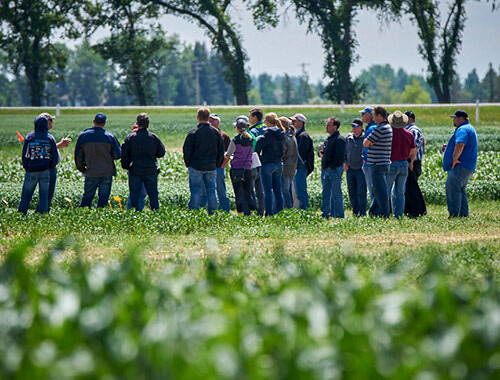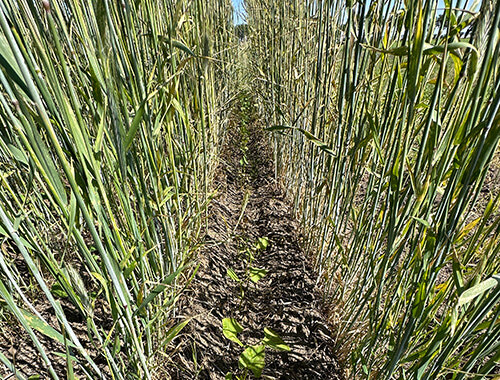Prochnow - I love what I do and I love to talk about good practices in Brazil that others can adapt to their situation. I'm really looking forward to interacting with the southern Alberta farming community.
by Kristi Cox in the Fall 2023 Farming Smarter Magazine
Dr. Luis Prochnow, an agronomist from Brazil that specializes in soil and plant nutrition, shared some things to consider when planning for nitrogen application. Dr. Prochnow will speak at the February 2024 Farming Smarter conference.
“If you don't manage it correctly, when you apply nitrogen fertilizer, you'll end up with very low efficiency,” said Prochnow. Urea is the most used nitrogen fertilizer worldwide because of its lower cost, but it has a problem with volatilization.
“Depending on the condition of the soil, especially if the pH is neutral or high, you will lose a lot of nitrogen from application of urea,” said Prochnow. “If you apply urea in dry conditions and it takes a long time for water or rain to come, you may be subjected to more losses. Incorporating urea to the soil, if feasible, will reduce substantially the losses of nitrogen by volatilization.”
Other sources include ammonia nitrate, which has a much lower volatilization rate than urea in most soils, and ammonia sulfate, which also supplies sulfur.
Another mitigation for loss of nitrogen is to use enhanced or slow-release fertilizers. Some slow the nitrification process, and some are urease inhibitors to prevent volatilization.
These alternatives to urea have higher costs, but Prochnow explains that they may reduce nitrogen losses, making them economically viable in several circumstances.
A newer development is green ammonia. The nitrogen needed still comes from the air, but the difference between this and traditional ammonia is that the hydrogen needed doesn’t come from gas, it comes from water electrolysis.
|
|
|
Image Caption: Dr. Luis Prochnow visiting a farm near Calgary in 2019 between meetings with the International Plant and Nutrition Institute. |
“This is something new in the market and because of the environmental aspect may increasingly be the way to go,” said Prochnow.
Once a producer sets a plan in place, it’s time to ensure needed products get to the farm.
“The prices right now are not so high, but they were two years ago,” he said. “Based on this economic scenario, my advice is to pay close attention to the conditions. Try to get the best moment to buy and don’t wait too much. Sometimes if you wait and then there is a shortage in the industry, then the industry cannot deliver exactly what you need.”
Prochnow emphasizes that producers always need to follow the basic rules of the four Rs, and they shouldn’t be afraid to consider changing their practices when appropriate. Technologies are changing fast – in fact the whole world is changing fast. He believes that those who keep up with the changes will thrive. Local science can help know what those changes should be.
“One of the things I always tell farmers is that they really need to have some kind of local, practical research they can trust that can serve as a background for their decisions,” said Prochnow.
He recommends taking all your available knowledge and putting it together to find the best possible solutions for your specific situation.
“There is not a silver bullet,” Prochnow said. “There's not one practice that will solve all the problems.”
Prochnow is excited to see everyone at the Farming Smarter Conference in February, where he will attend as a keynote speaker. He will present on Brazilian Agriculture with Emphasis in Soil Fertility Management.




